دوستانی که دنبال می کنن اخبار عرصهی طراحی رو در دنیا حتما شنیدند که چند روز قبل هرمان هرتزبرگر معمار معروف معاصر، جایزهی مدال طلایی سلطنتی رو در معماری از آن خود کرد، شاید هم بهش دادند!
نیاز نیست این جا نگاه انتقادی خودم رو به این جایزههای سرتاپا تزویر دوباره باز کنم، موکول می کنم این شرح درد رو به فرصتی که اگه حاصل شد کمی مستند تر درباره این جور جایزه ها بنویسم. اما این نگاه انتقادی نباید مانع این بشه که کسی مثل هرتزبرگر رو بشناسیم و آثار کلیدیش رو با هم یک مروری بکنیم:
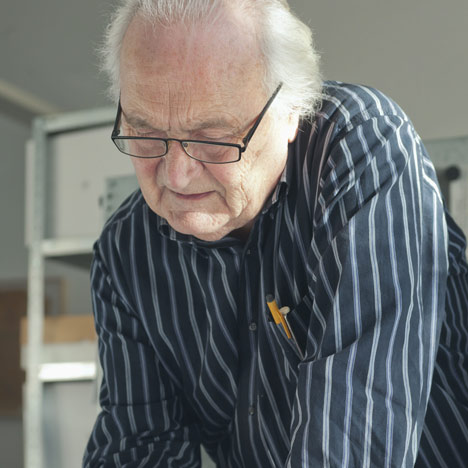
Here’s a selection of projects by Dutch architect Herman Hertzberger, who wasnamed as this year’s Royal Gold Medal recipient this morning.
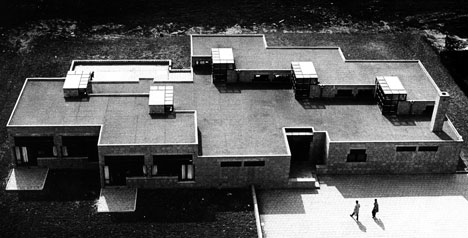
Above: Montessori School, Delft (1960-66), photograph is by Johan van der Keuken
Hertzberger will receive the prize in February 2012 – more details in our earlier Dezeen Wire story.
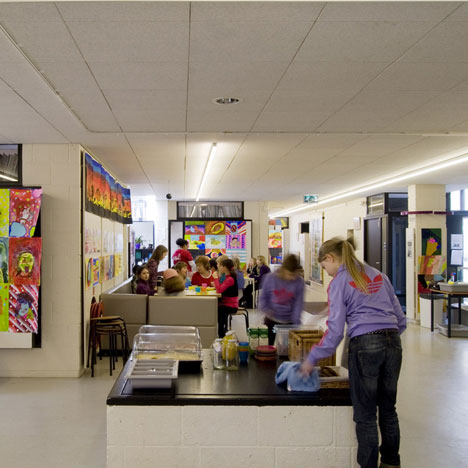
Above: Montessori School, Delft (1960-66), photograph is by Herman van Doorn
Here’s Hertzberger’s biography from the RIBA:
Born in 1932 Herman Hertzberger opened his own firm of architects in 1960, the present-day Architectuurstudio HH in Amsterdam. One of his major influences on 20th century architecture was to challenge the early modernist belief that ‘form follows function’ – that the shape of the building was defined by its purpose.
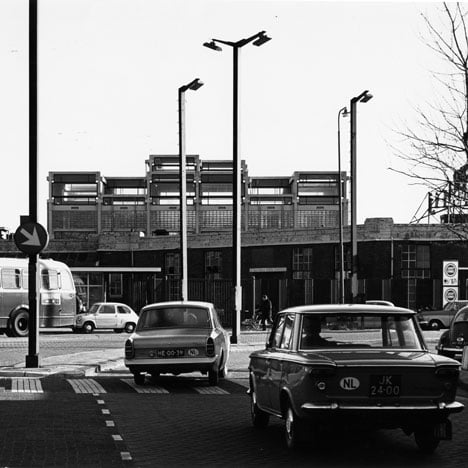
Above: Lin Mij Textile Workshop, Amsterdam (1962-64), demolished, photograph is by Jan Versnel
Hertzberger believes that the core function of a building does not provide the total solution to space usage: it is a framework that should enable its users to interpret and define how they inhabit it.
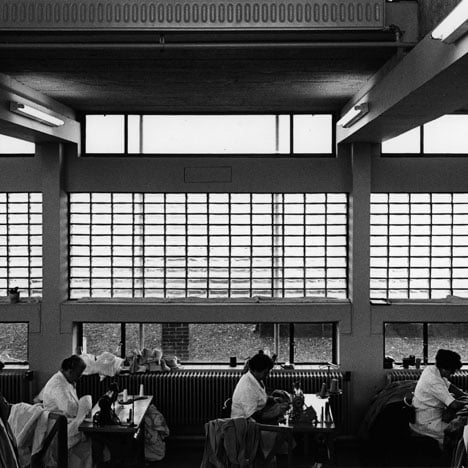
Above: Lin Mij Textile Workshop, Amsterdam (1962-64), demolished, photograph is by Jan Versnel
His buildings offer flexible ‘in between’ spaces that encourage our deeper human needs of dwelling and social activity.
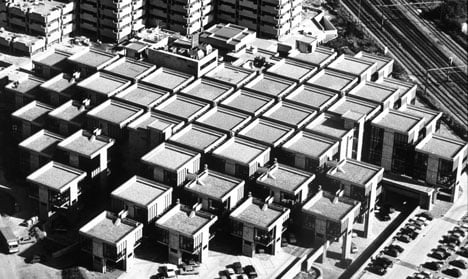
Above: Centraal Beheer Apeldoorn (1968-72), photograph is by Aviodrome Luchtfotografie
His celebrated Montessori School in Delft (1960-66) rethought the way that classrooms were laid out, with L-shaped rooms creating different zones.
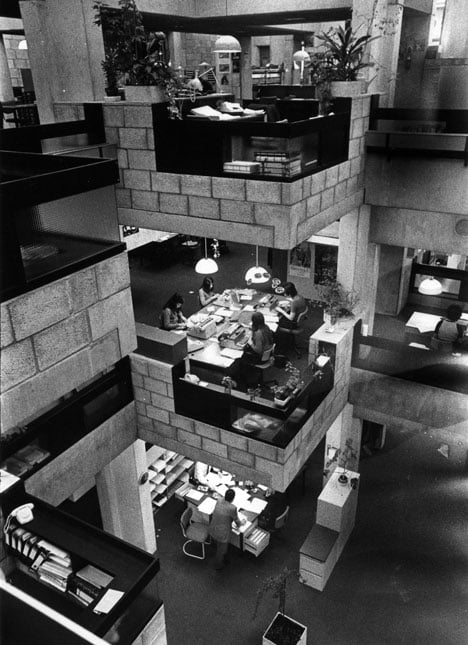
Above: Centraal Beheer Apeldoorn (1968-72), photograph is by Willem Diepraam
Images of children playing and learning on broad wooden steps as a creative space inspired many architects of schools across northern Europe.
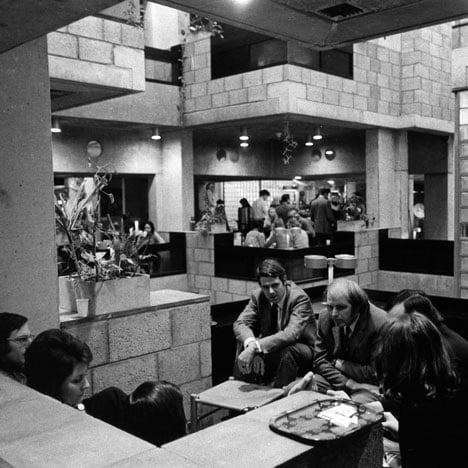
Above: Centraal Beheer Apeldoorn (1968-72), photograph is by Willem Diepraam
His exemplary workplace Central Baheer in Apeldoorn (1968-72) was designed with the needs of the individual at its core and the Ministry of Social Affairs and Employment in The Hague (1979-90) was one of the first buildings to develop the idea of the internal street or elongated atrium to encourage social interaction and get light into all the rooms.
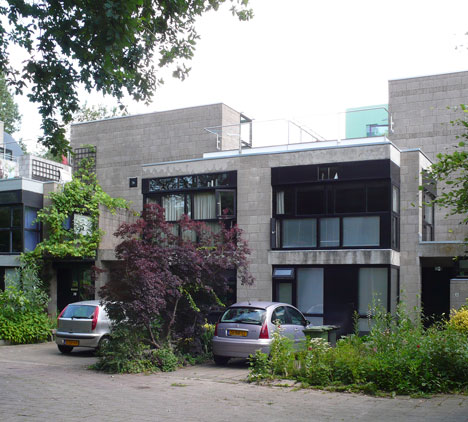
Above: Diagoon Housing, Delft (1969-70)
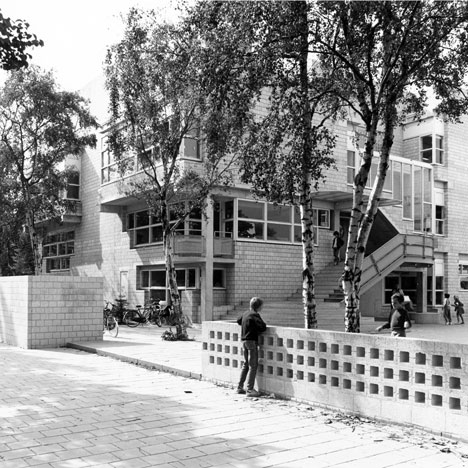
Above: Apolloscholen, Amsterdam (1980-83), photograph is by Frits Dijkhof
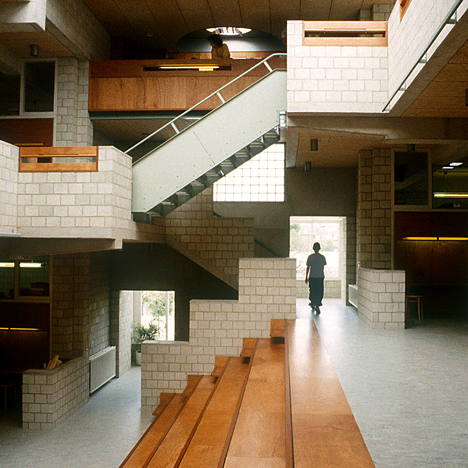
Above: Apolloscholen, Amsterdam (1980-83)
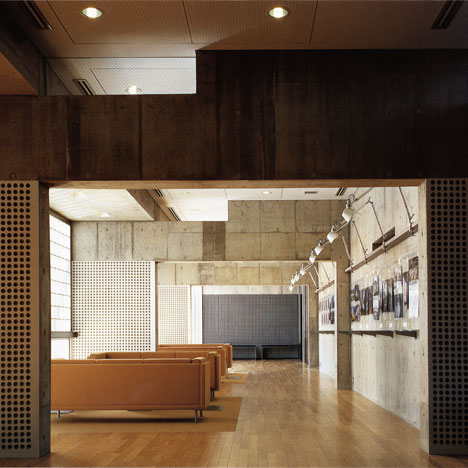
Above: YKK Dormitory, Kurobe, Japan (1991-98)
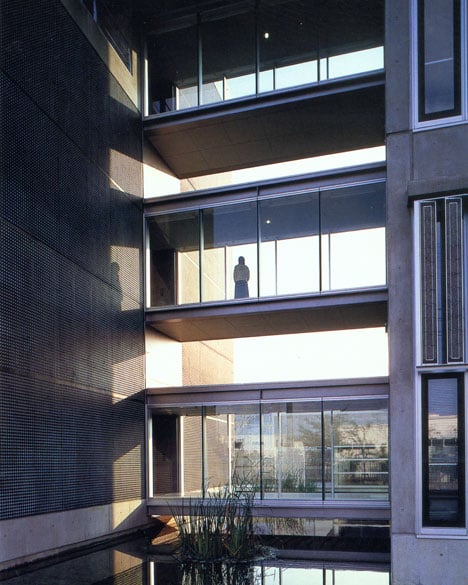
Above: YKK Dormitory, Kurobe, Japan (1991-98)
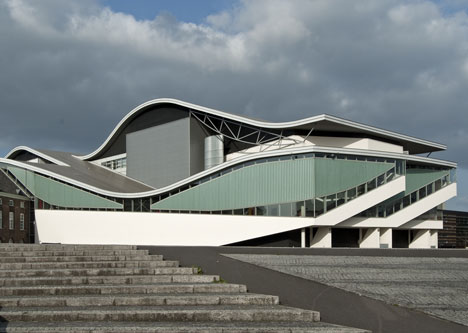
Above: Chasse Concert Hall, Breda (1992-95), photograph is by Herman van Doorn
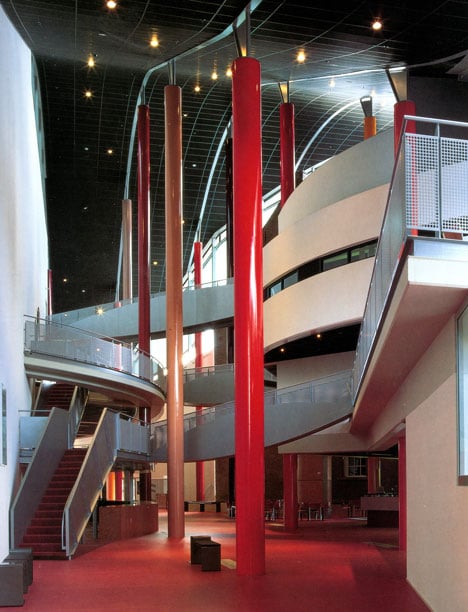
Above: Chasse Concert Hall, Breda (1992-95), photograph is by Herman van Doorn
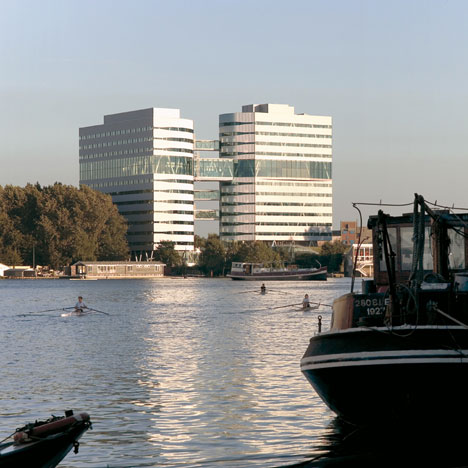
Above: Waternet Head Office, Amsterdam (2000-05), photograph is by Duccio Malagamba
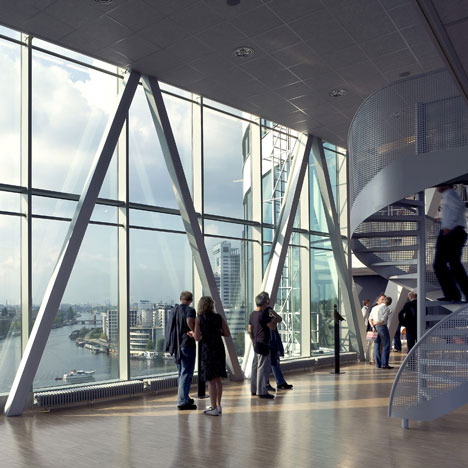
Above: Waternet Head Office, Amsterdam (2000-05), photograph is by Duccio Malagamba
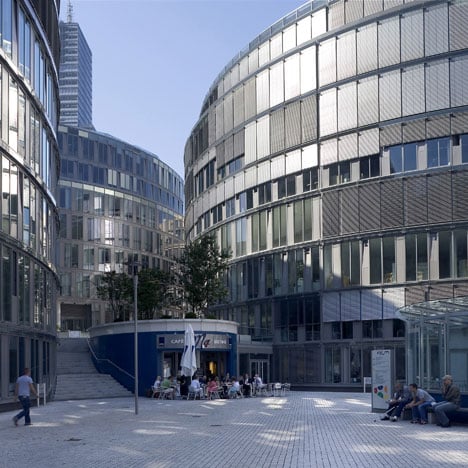
Above: Media Park & Housing Cologne, Germany (2004-04), photgraph is by Duccio Malagamba
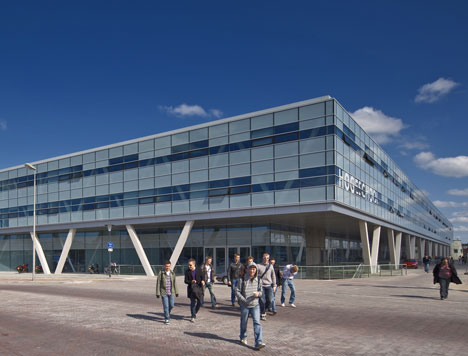
Above: NHL University Leeuwarden (2004-10), photograph is by John Lewis Marshall
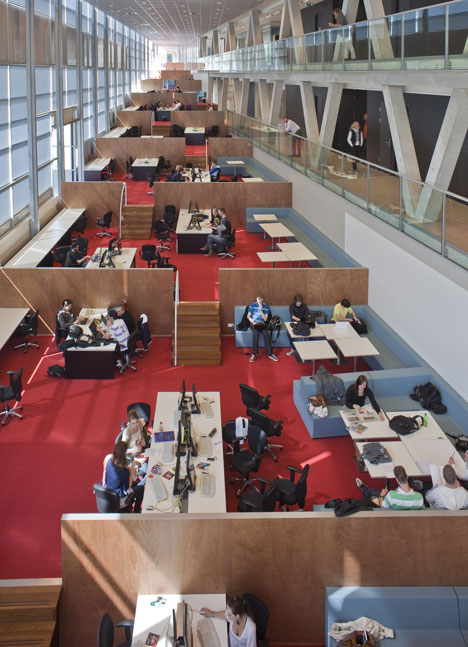
Above: NHL University Leeuwarden (2004-10), photograph is by John Lewis Marshall
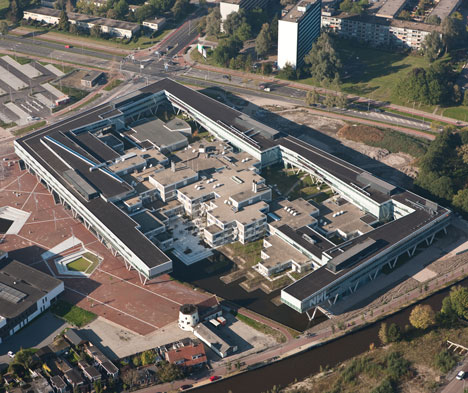
Above: NHL University Leeuwarden (2004-10)
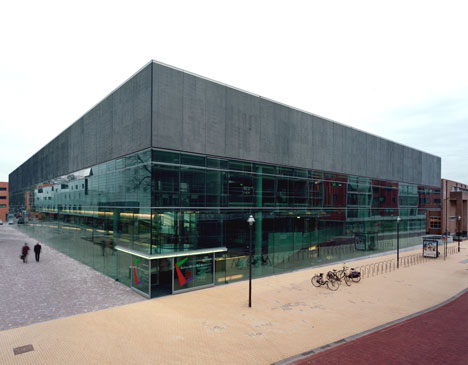
Above: Coda Shelter for Culture (museum) Apeldoorn (2004-11), photograph is by Herman van Doorn
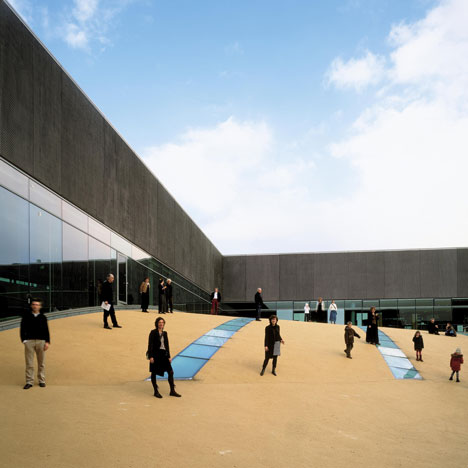
Above: Coda Shelter for Culture (museum) Apeldoorn (2004-11), photograph is by Herman van Doorn
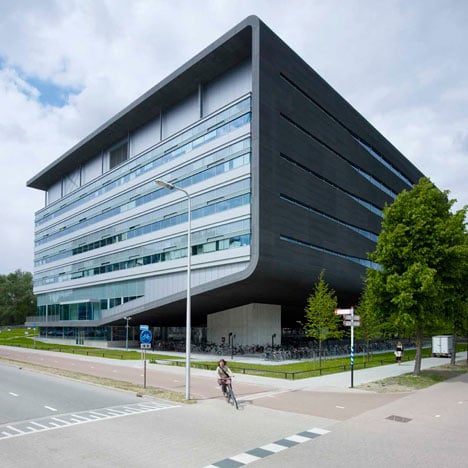
Above: Faculty of Science University of Utrecht (2006-11)
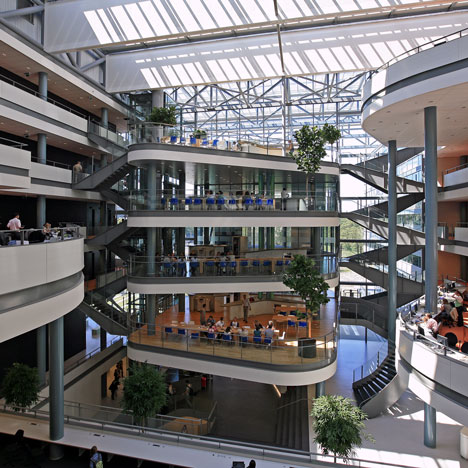
Above: Faculty of Science University of Utrecht (2006-11), photograph is by Rob Hoekstra





















